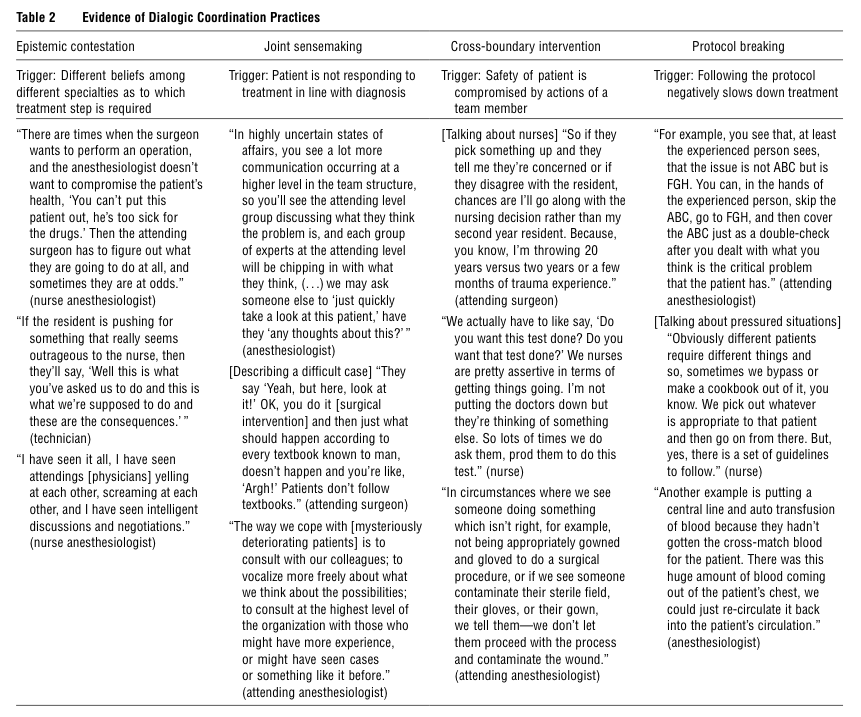https://metagov.org/projects/koi-pond
Metagov's KOI (Knowledge Organization Infrastructure) is a graph database that supports relationships between knowledge objects, users, and groups within Metagov. via JM
https://metagov.org/projects/koi-pond
Metagov's KOI (Knowledge Organization Infrastructure) is a graph database that supports relationships between knowledge objects, users, and groups within Metagov. via JM
that's just the story of how we transfer knowledge and how we preserve that knowledge and move it around and even when it's taken from us and we can find it 00:53:56 we go and we sing that song and we sing that spirit out of there and so this is what's important about transmission of knowledge for for us and so that knowledge they don't belong 00:54:09 to us
Uncle Ghillar Michael Anderson told a story of how his mob went into a museum and transferred the knowledge from sacred objects in the museum and then took the spirts out of there and moved them back in country. The curators didn't understand the process at all or how they had corrupted the sacred objects.
third response to manage tensions is to promoteknowledge collaboration by enacting dynamic bound-aries. In social sciences, although boundaries divide anddisintegrate collectives, they also coordinate and inte-grate social action (Bowker and Star 1999, Lamont andMolnár 2002). Fluidity brings the need for flexible andpermeable boundaries, but it is not only the propertiesof the boundaries but also their dynamicity that helpmanage tensions.
Cites Bowker and Star
Good examples of how boundaries co-evolve and take on new meanings follow this paragraph.
Based on our collective research on to date, we haveidentified that as tensions ebb and flow, OCs use (or,more precisely, participants engage in) any of the fourtypes of responses that seem to help the OC be gen-erative. The first generative response is labeledEngen-dering Roles in the Moment. In this response, membersenact specific roles that help turn the potentially negativeconsequences of a tension into positive consequences.The second generative response is labeledChannelingParticipation. In this response, members create a nar-rative that helps keep fluid participants informed ofthe state of the knowledge, with this narrative havinga necessary duality between a front narrative for gen-eral public consumption and a back narrative to airthe differences and emotions created by the tensions.The third generative response is labeledDynamicallyChanging Boundaries. In this response, OCs changetheir boundaries in ways that discourage or encouragecertain resources into and out of the communities at cer-tain times, depending on the nature of the tension. Thefourth generative response is labeledEvolving Technol-ogy Affordances. In this response, OCs iteratively evolvetheir technologies in use in ways that are embedded by,and become embedded into, iteratively enhanced socialnorms. These iterations help the OC to socially and tech-nically automate responses to tensions so that the com-munity does not unravel.
Productive responses to experienced tensions.
Evokes boundary objects (dynamically changing boundaries) and design affordances/heuristics (evolving technology affordances)
Fluidity recognizes the highly flexible or permeableboundaries of OCs, where it is hard to figure out whois in the community and who is outside (Preece et al.2004) at any point in time, let alone over time. Theyare adaptive in that they change as the attention, actions,and interests of the collective of participants change overtime. Many individuals in an OC are at various stagesof exit and entry that change fluidly over time.
Evokes boundary objects and boundary infrastructures.
Recently, Brown and Duguid (2001, p. 208) sug-gested that coordination of organizational knowledgeis likely to be more challenging than coordination ofroutine work, principally because the “elements to becoordinated are not just individuals but communitiesand the practices they foster.” As we found in ourinvestigation of coordination at the boundary, signif-icant epistemic differences exist and must be recog-nized. As the dialogic practices enacted in responseto problematic trajectories show, the epistemic dif-ferences reflect different perspectives or prioritiesand cannot be bridged through better knowledge
Need to think more about how subgroups in SBTF (Core Team/Coords, GIS, locals/diaspora, experienced vols, new vols, etc.) act as communities of practice. How does this influence sensemaking, epistemic decisions, synchronization, contention, negotiation around boundaries, etc.?
Boundarywork requires the ability to see perspectives devel-oped by people immersed in a different commu-nity of knowing (Boland and Tenkasi 1995, Star andGriesemer 1989). Often, particular disciplinary focilead to differences in opinion regarding what stepsto take next in treating the patient.
Differences in boundary work can lead to contentiousness.
The termdialogic—as opposed to monologic—recognizes dif-ferences and emphasizes the existence of epistemicboundaries, different understandings of events, andthe existence of boundary objects (e.g., the diagnosisor the treatment plan). A dialogic approach to coordi-nation is the recognition that action, communication,and cognition are essentially relational and highlysituated. We use the concept of trajectory (Bourdieu1990, Strauss 1993) to recognize that treatment pro-gressions are not always linear or positive.
Cites Star (boundary objects) and Strauss, Bourdieu (trajectory)

In knowledge work, several related factors sug-gest the need to reconceptualize coordination.
Complex knowledge work coordination demands attention to how coordination is managed, as well as what (content) and when (temporality).
"This distinction becomes increasingly important in complex knowledge work where there is less reliance on formal structure, interdependence is changing, and work is primarily performed in teams."
Traditional theories of coordination are not entirely relevant to fast-response teams who are more flexible, less formally configured and use more improvised decision making mechanisms.
These more flexible groups also are more multi-disciplinary communities of practice with different epistemic standards, work practices, and contexts.
"Thus, because of differences in perspectives and interests, it becomes necessary to provide support for cross-boundary knowledge transformation (Carlile 2002)."
Evokes boundary objects/boundary infrastructure issues.